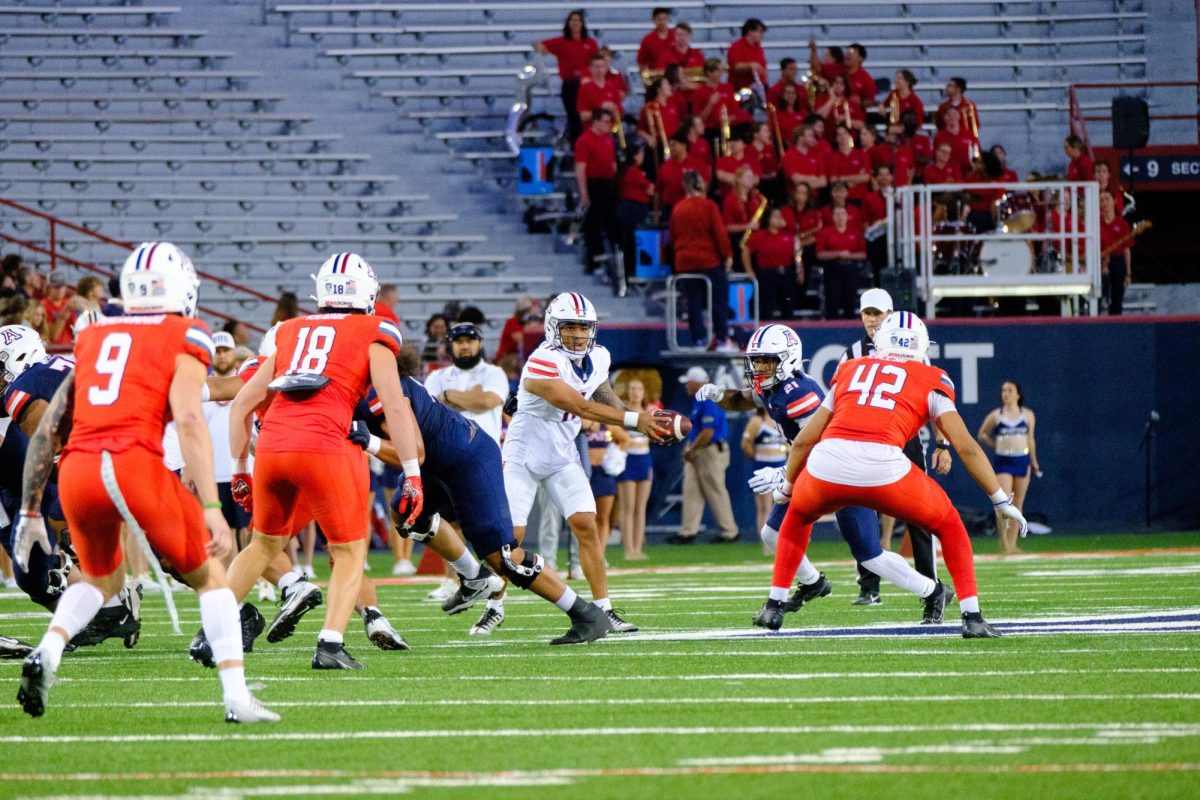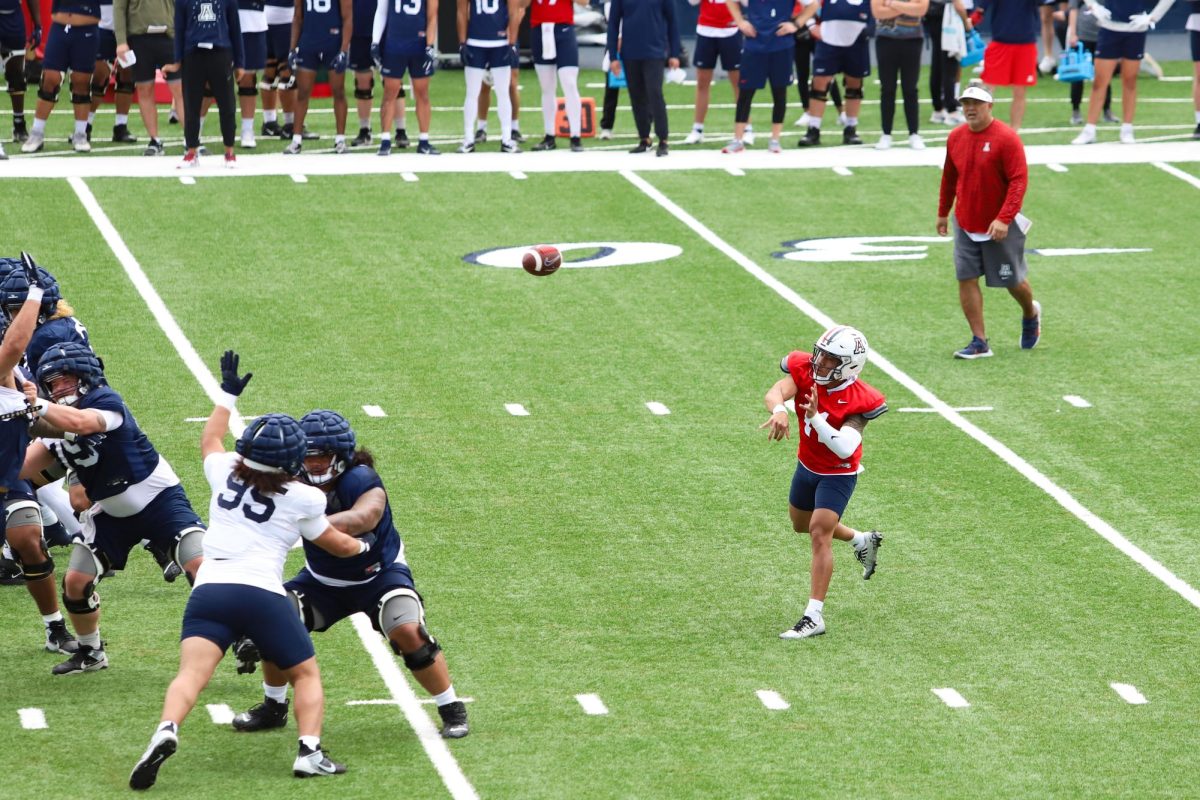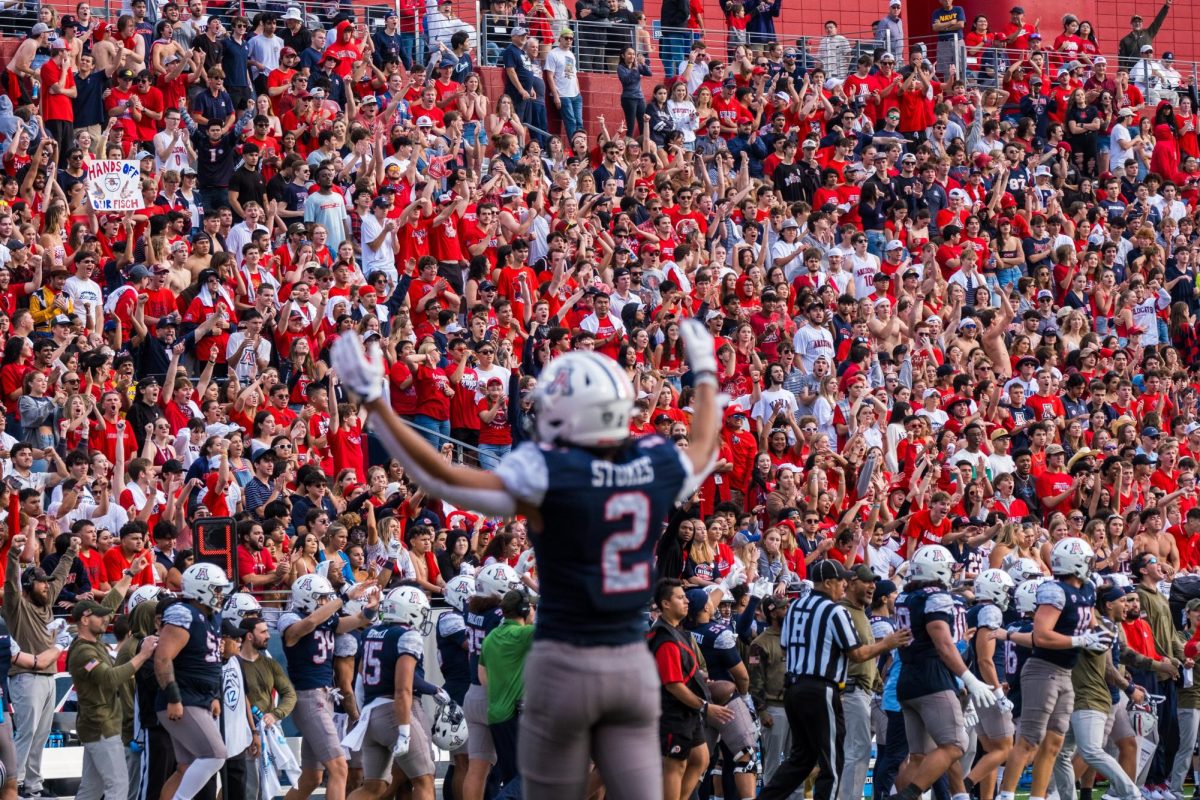Lurking in the shadow of Stanford’s star-studded offense is one of the Pac-12’s top units — the Cardinal defense.
Holding opponents to just 286 yards of total offense and 26 yards rushing per game, the Stanford defense boasts a front-seven that’s one of the most physical groups in the country.
Leading that group are linebackers Chase Thomas and Shayne Skov. A junior, Skov was named the Lott IMPACT Player of the Week for his 11-tackle, 1.5-sack performance at Duke.
“Skov, he’s all over the field, he’s their playmaker,” Arizona center Kyle Quinn said. “They’re just gamers. They fly to the ball and they’re not afraid to stick their helmet in and make a tackle.”
Stanford’s defense has spent the last several years building a reputation for being a physical, hard-hitting group.
But without a defensive line that can slow down blockers, a strong linebacking corps won’t be able to make plays. The Cardinal defense has the D-line to allow its linebackers to roam free, according to Arizona offensive coordinator Seth Littrell.
“As of now, I think they’re one of the top (defenses) in the country,” Littrell said. “They play extremely hard and know what they’re doing. You’ve got to be ready to play four quarters.”
Stanford’s players aren’t the only thing that sets the defense apart. The Cardinal use a 3-4 defensive scheme — three linemen and four linebackers — that’s rarely used in the Pac-12, which gives opposing offenses something extra to think about.
And with Arizona’s inexperienced offensive line, thinking about blocking a new scheme can just add more confusion to an already-hectic environment.
“Obviously it changes some things,” Littrell said. “The hardest thing with inexperience is blocking different fronts and understanding what scheme you have to run, and guys have different assignments. They’ve just got to get to where they rep it enough and get good at it.”
Scoring against the 3-4 is something Arizona has struggled with in the past two seasons. The Wildcats scored 17 points while getting blown out at Stanford last season and scored just 10 points against California, which also uses the scheme.
In 2009, the Wildcats scored just 16 points in a loss at California.
But seeing the defense isn’t foreign to Arizona. The Wildcat defense uses three linemen in some third-down situations during practice, and Quinn is excited for a chance to go man-on-man with Cardinal nose guard Terrence Stephens.
“It actually makes things a little easier,” Quinn said of blocking a defender lined up directly across from him. “You don’t have to step as far. It really goes back to basic football; it’s one-on-one, center vs. the nose guard. That’s the way it was in the old days, so it’s gonna be a fun night.”
Blocking isn’t the only way Stanford’s defensive scheme disrupts an offense. It also allows the Cardinal to switch up where it blitzes from, something that quarterback Nick Foles said sets Stanford’s defense apart from most that Arizona faces.
“You can bring pressure from a lot of different places, and that’s the thing they do well,” Foles said. “You don’t really know where it’s coming from.”
But at the end of the day, Stanford’s physicality is what had Arizona’s offense buzzing.
“They’re one of those teams,” Foles said, “that when you release the ball, they’re running through you, not decelerating.”














